#photographer: Antonio Sierra
Explore tagged Tumblr posts
Text

San Sebastian International Film Festival, 2018 Donostia Award Photocall Photographer: Antonio Sierra
#judi daily!#san sebastian international film festival#judi dench#dame judi dench#photographer: Antonio Sierra#donostia award photocall
5 notes
·
View notes
Text
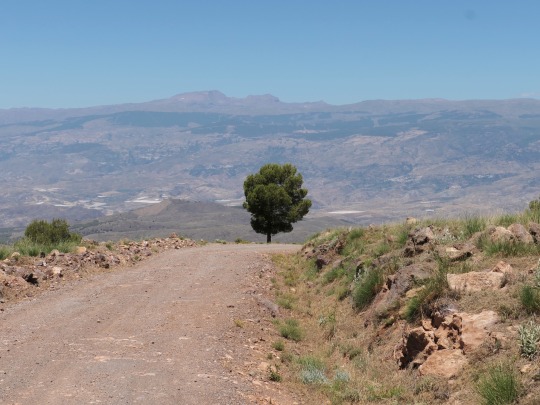
Caminante, no hay camino,
se hace camino al andar.
Antonio Machado (Proverbios y cantares, XXIX)
#nature#forest#landscape#sky#views#beautiful#mountains#hill climb#photography#trees#nature photography#sierra#nevada#Antonio Machado#caminante#no#hay#camino#sightseeing#own photograph
4 notes
·
View notes
Photo

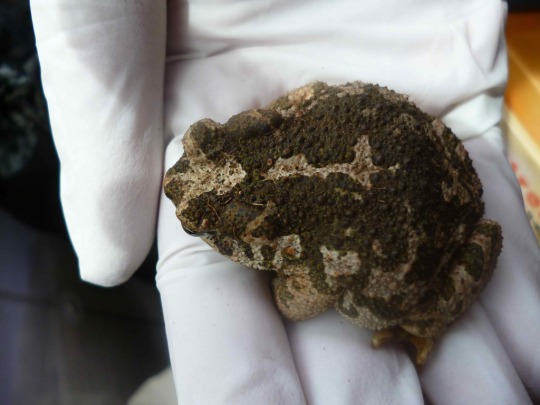
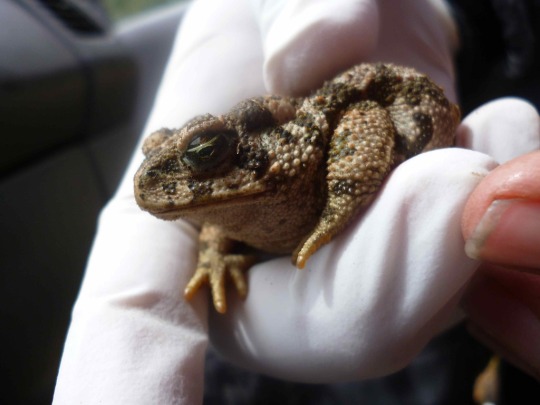

This round little creature is a pine toad [Incilius occidentalis] found in Sierra de Santa Rosa, Mexico, by photographer Angel Antonio. These toads possess striking, high-contrast markings which help camouflage them against the terrain of their pine forest habitats.
327 notes
·
View notes
Text
EL PASO 120 : EDGE OF THE SOUTHWEST
“The images of El Paso and 120 miles around conjure so vividly something of the character of the wonderful Southwest. Under a sky that seems limitless, the roads invite one to travel, to explore, to become a pioneer. When I see these great unending routes, piercing the vastness of the territory, they trigger in me the beginnings of an understanding of the importance to the American people of the concepts of freedom and opportunity.” Daragh McDonald London, England UK All too often the El Paso area is an afterthought in any publication chronicaling West Texas or the Southwest. When I view photography books illustrating this vast area or read magazine articles, the message I receive is always the same: "Oh, by the way, there is a dusty place in far West Texas called El Paso; it is stuck in the middle of nowhere." This corner of Texas is a footnote, if you will. No doubt this area is overlooked due to El Paso's distances from other civilisation. I say this lightly, though there is some truth to the thought. After all, El Paso seems to be a never-ending drive from other cities: twelve hours from Dallas, nine hours from San Antonio, four hours from Albuquerque, five hours from MIdland-Odessa, and seven hours from Phoenix. So yes, I do undertand why this area is considered the "edge" and off the radar for most.

It seems perfectly natural, if one mainly travels along Insterstate 10 through West Texas and southern New Mexico, for a traveler not to give El Paso much thought. As one looks out the window of a moving car, the easy conclusion would be that there is not much more to see than a plethora of tumbleweeds, desert brush, a few mountains, and a sea of wide-open space. Quite frankly, the roads one usually navigates move directly through the least interesting parts of the landscape. Admittedly, the shape of this book didn't immediately occur to me. I, too, based my judement of the area on Insterstate 10, not really piecing all the bits together, despite the fact that I am based in El Paso. The adventurer in me would visit the areas covered in this book independently; each a day trip and roughly a two-hour drive, or 120 miles, from El Paso. White Sands National Park in Southern New Mexico and the Guadalupe Mountains - Salt Flat area are two of my favourite destinations, though the landscape found in Lincoln National Forest at Cloudcroft has always offered an interesting contrast to the desert plains - and the cooler climate from the heat of the Chihuahua Desert.
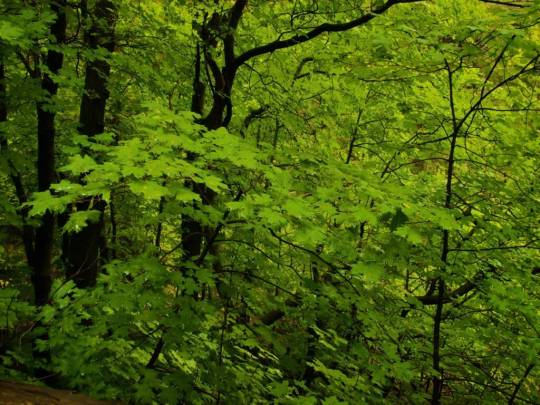
My visits to Hueco Tanks State Park and Historic Site directly east of El Paso have been sporadic, although I enjoy my amatuerish attemps at rock climbing, and City of Rocks, between Deming and Silver City, New Mexico, allows my imagination to run wild thinking I am visiting the Flinstones' Bedrock. Van Horn? Indeed, the Van Horn area - the "Gateway to Big Ben Country" - offers some of the most rugged and inspiring landscape in far West Texas. Seeing the sunrise over the Sierra Vieja mountains at the Coal Mine Ranch will be forever etched in my memory, and the largest collection of Precambrian rock formations in the wold at the Red Rock Ranch is a delight.

Most notable for me, however, is El Paso, as this is home. The Franklin Mountain range runs directly through the city and is the largest urban state park in the United States. For me, the Franklins are old friends that I miss when I travel around the world. In fact, this range is literally just outside my back door, and my friend Eric and I hike its slopes almost weekly. Each of the aforementioned destinations is "just around the corner" in local terms, since driving times to other areas are four hours or more. While each of the areas photographed for this book have captivated me, I find the roads to and from equally fascinating. I believe the wide-open spaces that unfurl along these long, unobstructed roads epitomize the spirit of freedom many of us in the West feel. Whilte I travel quite often throughout the world, each time behind the lens of my camera, I can safely say the landscapes of West Texas and Southern New Mexico touch my soul more deeply than any other place. A spirit of freedom that is second to none wells up in me when I stand upon a high desert ridge; the sky above me opens up its cobalt tent, and the land below it stretches toward a horizon that seems to recede into infinity. Not only do deep fresh breaths fill me, but I can actually hear my breathing because the sounds of the cosmopolitan world are nowhere nearby. The weight of the world swiftly lifts off my shoulders - I begin to connect with that which is around me, begin to move back toward my own centre. In a way, this great landscape offers me the freedom to feel whole again. No competeing demands tug at me from different directions. This is silence. Time is once again my friend.

The roads pictured in this book were avenues I traveled for the most part, but it was in the air where El Paso 120 came together. As I flew around the area in a twin-engine plane with Suzie Azar, my pilot the the former mayor of El Paso, I realised El Paso is not at the edge but right in the middle of an amazing landscape. And it is a landscape that is quite significant to the rest of the world, as you will discover as you flip through the book. One might think I deliberately used a mathematical compass on a map to draw out what would be included in this book, but this is not the case. Flying above it, as a bird would, allowed me the opportunity to pull together what I had already explored on the ground. Surveying the land from atop El Paso's Franklin Mountains, I can glimpse each of the areas portrayed in El Paso 120. A number of these destinations, all within striking distance of the city, are significant icons in the natural world. Guadalupe Peak is the highest point in Texas, at 8749 feet. El Capitan, a massive limestone formation is the Guadalupe Mountains most recognisable feature.

The remarkable City of Rocks is a fantasyland of wind- and water-sculptued volcanic rock. Only six other places in the world have anything like them.
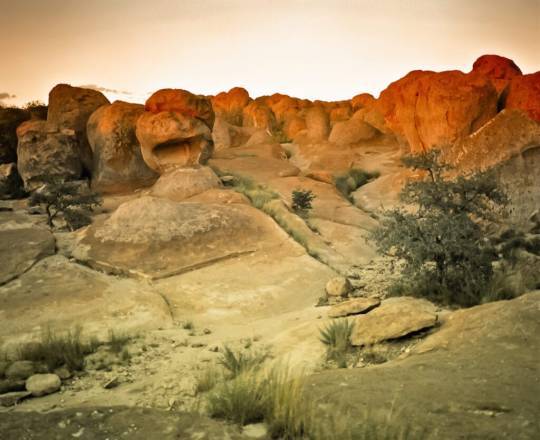
Near Kilbourne Hole, New Mexico, a lava tube (cave) at Aden Crater yielded up the skeleton of one of the last giant ground sloths in North America. The nine-foot-long skeleton, with much of its skin and hair still preserved, is now at the Yale Peabody Museum of Natural History. At White Sands there is the world's largest gypsum dune field, where great waves of gypsum lap nearly three hundred square miles of desert. White Sands National Park preserves a major portion of it.
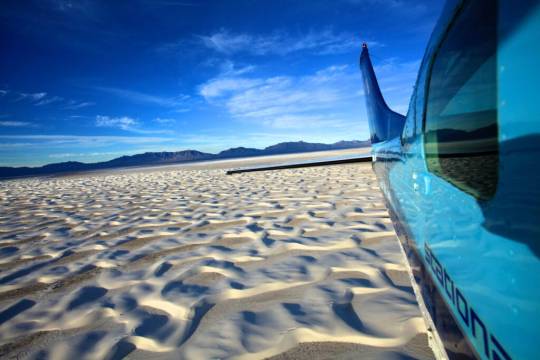
Then there were Hueco Tanks, known in the nineteenth century as the last source of water between the Pecos River and El Paso. The site is now one of the most popular destinations in the world for rock climbers. Not only have I had the luxury of discovering the El Paso area, but each trek has helped me find my balance. I can think clear thoughts. Any and all stress goes away. I have traveled these roads from El Paso countless times to escape the pressure of cosmopolitan life. I get lost behind my camera. My mind wanders with each trek, wondering what the area was like underwater millions of years ago, or what the Spanish explorers thought when they came upon this terrain, making their way northward. Can you imagine what they must have though when out of the brown desert arose the larges white gypsum sand dunes in the world? The idea of this fascinates me and in turn inspires me to venture further. As you view my photographic exporation, I hope you, too, discover that El Paso is not at the edge but instead at the very centre of some remarkably amazing landscapes. One may think 120 miles is a long way to get anywhere. But within these wide-open spaces, it's only just down the road and around the corner. With good fortune during my next journey, I shall find you discovering firsthand El Paso and the wonders radiating 120 miles in all directions from the city. Make sure you say "Hello," when we cross paths. Read the full article
0 notes
Photo

Texto e imágen tomada de la página de Instagram de @resistenciatenochtitlan Acualmetzli nació en Coyoacan actualmente ciudad de México en 1520, y se cree que falleció en la Gran Chichimeca Queretana en 1542, fue hijo de un guerrero mexica, al quedar huérfano se educó en el Colegio de la Santa Cruz de Tlatelolco, fue bautizado con el nombre de Ignacio Alarcón de Roquetilla. En 1540, al comprender la trágica muerte de sus padres, decidió unirse a los chichimecas para combatir a los conquistadores españoles. Su padre murió durante el desarrollo de la Conquista de México. Su madre, en castigo por ofender a los españoles, fue mutilada de las orejas y murió a consecuencia. Acualmetzli quedó bajo la tutela de un conquistador español quien lo educó de forma cristiana. Aprendió la lengua española y el manejo de las armas. Al cumplir diecisiete años ingresó en el Colegio de la Santa Cruz de Tlatelolco, aprendió latín y francés. Fue discípulo del franciscano Arnoldo Balzac. El sacerdote fue quien le añadió el nombre de Roque. Al cumplir veinte años, Acualmetzli aprendió la forma de escribir náhuatl, intrigado por su origen, investigó y comprendió la muerte de sus padres. Desde ese momento, planeó unirse a los chichimecas para combatir a los españoles. Confió sus planes al franciscano, quien trató de persuadirlo. Ante la negativa, Balzac fingió estar de acuerdo con el joven, pero mientras tanto, logró obtener una orden del virrey Antonio de Mendoza para enviarlo de inmediato a España, en donde debería de continuar sus estudios. Sin embargo Acualmetzli, logró escapar a la Sierra de Querétaro durante la época en que se desarrollaba la Guerra del Mixtón. Después de combatir furtivamente durante dos años, en el otoño de 1542, las fuerzas del virrey de Mendoza cercaron a los compañeros de Acualmetzli, y notaron que: Si quieres leer completo, buscamos en Facebook . .imagen por @qetzaart Selección de @yaocelotlest . . #Mexico #cultura #cultural #culture #prehispanic #instagram #foto #arqueología #arqueologia #archaeology #civilization #mesoamerica #mesoamérica #photo #photography #photographer #museo #museum #mexicanpride #orgullomexicano #mexicanos #archéologie #archeologie (en Chimalhuacán) https://www.instagram.com/p/B1mRBMUghs9/?igshid=mj78kjkh663x
#mexico#cultura#cultural#culture#prehispanic#instagram#foto#arqueología#arqueologia#archaeology#civilization#mesoamerica#mesoamérica#photo#photography#photographer#museo#museum#mexicanpride#orgullomexicano#mexicanos#archéologie#archeologie
0 notes
Photo





'Residencia Miraflores' (children's summer residence) Miraflores de la Sierra, Madrid, Spain; 1957-59
Alejandro de la Sota, José Antonio Corrales, Ramón Vázquez Molezún (photographs by Pando)
«Winter in Miraflores is hard, and its icy cold impedes building construction. In planning this project, it was necessary to pay attention to the "local voice". This led to a horizontal partitioning of the building: the lower part is embedded and anchored in the site; the stone walls and the solid building elements were constructed by local bricklayers. The upper part, the iron supports, the wooden roof, the metal structures and the windows were made in Madrid. The lower part was constructed during one summer, and the next summer saw the assembly of the parts made in Madrid during the winter»
see map | more information 1, 2, 3, 4, 5, 6, 7, 8
via "Werk, Bauen + Wohnen", 84 (1997) / “(Das) Werk, 54” (1967)
#architecture#arquitectura#architektur#architettura#alejandro de la sota#jose antonio corrales#josé antonio corrales#ramon vasquez molezun#ramón vásquez molezún#pando#residencia miraflores#summer school#children village#miraflores de la sierra#madrid#espana#spain#spanish architecture
77 notes
·
View notes
Text
The Murder of President John F Kennedy by CIA Operation 40. By Gualdo Hidalgo, Latin Heritage Foundation's publisher
The Murder of President John F Kennedy by CIA Operation 40. By Gualdo Hidalgo, Latin Heritage Foundation's publisher
Operation 40 was presided by Richard Nixon
CIA Operation 40 killed JFK and more than one hundred witnesses
Operation 40 allegedly charged with assasinating Fidel Castro killed a bunch of other people instead,
Operation 40 was the code name for a CIA counterintelligence group composed mostly by Cuban exiles.
It was approved by President Dwight D. Eisenhower in March 1960, after the January 1959 Cuban Revolution. The group was presided over by Richard Nixon and included Admiral Arleigh Burke, Livingston Merchant of the State Department, National Security Adviser Gordon Gray, and Allen Dulles of the CIA.
CIA assembled virtually the same team that was involved in the removal of Arbenz: Tracey Barnes, Richard Bissell, David Morales, David Atlee Phillips, E. Howard Hunt, Rip Robertson and Henry Hecksher. Added to this list were several agents who had been involved in undercover operations in Germany: Ted Shackley, Tom Clines and William Harvey.
Tracy Barnes functioned as head of the Cuban Task Force. He called a meeting on January 18, 1960, in his office in Quarters Eyes, near the Lincoln Memorial in Washington, which the navy had lent while new buildings were being constructed in Langley. Those who gathered there included Howard Hunt, future head of the Watergate team and a writer of crime novels; Frank Bender, a friend of Trujillo; Jack Esterline, who had come straight from Venezuela where he directed a CIA group; psychological warfare expert David A. Phillips, and others.
Vice-President Richard Nixon was the Cuban "case officer," and had assembled an important group of businessmen headed by George Bush Sr and Jack Crichton, both Texas oilmen, as fundraisers.
It seems that Operation 40, created to remove Fidel Castro, had been redirected to kill Kennedy, as part of a freelance operation. David Atlee Phillips in the unpublished manuscript entitled The AMLASH Legacy wrote: "I was one of those officers who handled Lee Harvey Oswald... We gave him the mission of killing Fidel Castro in Cuba... I don't know why he killed Kennedy. But I do know he used precisely the plan we had devised against Castro. Thus the CIA did not anticipate the president's assassination, but it was responsible for it. I share that guilt." And Frank Sturgis stated that "this assassination group (Operation 40) would upon orders, naturally, assassinate either members of the military or the political parties of the foreign country that you were going to infiltrate, and if necessary some of your own members who were suspected of being foreign agents."
This photograph was taken in a nightclub in Mexico City on 22nd January, 1963. It has been argued by Daniel Hopsicker that the men in the photograph are all members of Operation 40. Hopsicker suggests that the man closest to the camera on the left is Felix Rodriguez, next to him is Porter Goss and Barry Seal.Hopsicker adds that Frank Sturgis is attempting to hide his face with his coat. It has been claimed that in the picture are Albertao 'Loco' Blanco (3rd right) and Jorgo Robreno (4th right).
Operation 40 Members
Cubans who became members of Operation 40 included Antonio Veciana, Luis Posada, Orlando Bosch, Roland Masferrer, Eladio del Valle, Guillermo Novo, Rafael Villaverde, Carlos Bringuier, Eugenio Martinez, Antonio Cuesta, Hermino Diaz Garcia, Barry Seal, Felix Rodriguez, Ricardo Morales Navarrete, Juan Manuel Salvat, Isidro Borjas, Virgilio Paz, Jose Dionisio Suarez, Felipe Rivero, Gaspar Jimenez Escobedo, Nazario Sargent, Pedro Luis Diaz Lanz, Jose Basulto, Rafael Chichi Quintero, Alvin Ross, and Paulino Sierra.\
Alvin Ross; Antonio Cuesta; Antonio Veciana; Barry Seal Bernard Barker Carl Elmer Jenkins; Carlos Bringuier; David A. Phillips David Sanchez Morales E. Howard Hunt, Eladio del Valle Eugenio Martinez (‘Musculito’); Felipe Rivero; Felix Rodriguez Mendigutia; Frank Bender Frank Sturgis; Gaspar ‘Gasparito’ Jimenez Escobedo; George Bush Gerry Patrick Hemming; Guillermo Novo; Henry Hecksher. Hermino Diaz Garcia; Isidro Borjas; Jack Crichton Jack Esterline, Jose Basulto; Jose Dionisio Suarez; Jose Sanjenis Perdomo, Chief of Police Cuban Pres Carlos Prio Juan Manuel Salvat; Luis Posada Carriles; Nazario Sargent; Orlando Bosch; Paulino Sierra; Pedro Luis Diaz Lanz; Porter Goss; Rafael ‘Chi Chi’ Quinterol Ricardo Morales Navarrete Richard Bissell Rolando Masferrer; Ted Shackley, CIA station-chief in Miami Thomas G. Clines; Tracy Barnes Virgilio Paz Romero; William C. Bishop; William Harvey. William Robert “Tosh” Plumlee; William “Rip” Robertson;
Jack Alston Crichton
In 1960 Richard Nixon recruited George Bush, Sr and Jack Crichton to gather funds for Operation 40.
Rivhard M Nixon appointed Jack Alston Crichton in Operation 40 the group that Warren Hinckle and William Turner described in Deadly Secrets, as the “assassins-for-hire” organization. Jack Crichton was the commanding officer of the 488th Military Intelligence Detachment. He was Chairman of the Dallas Civil Defense Intelligence Committee. In early 1961, he was behind a program called 'Know Your Enemy' - a phase of defense in the Cold War. This focused on Communists and their perceived purpose to destroy the American way of life.
488th Military Intelligence Detachment
In 1956 Jack Alston Crichton started up his own spy unit, the 488th Military Intelligence Detachment in Dallas. Crichton served as the unit's commander under Lieutenant Colonel George Whitmeyer, who was in overall command of all Army Reserve units in East Texas. In an interview Crichton claimed that there were "about a hundred men in that unit and about forty or fifty of them were from the Dallas Police Department."
In November 1963 Jack Alston Crichton was involved in the arrangements of the visit that President John F. Kennedy made to Dallas. His close friend, Deputy Police Chief George L. Lumpkin, and a fellow member of the the
488th Military Intelligence Detachment
,drove the pilot car of Kennedy's motorcade. Also in the car was Lieutenant Colonel George Whitmeyer, commander of all Army Reserve units in East Texas. The pilot car stopped briefly in front of the Texas School Book Depository, where Lumpkin spoke to a policeman controlling traffic at the corner of Houston and Elm.
As Russ Baker points out in Family of Secrets (2008) Crichton served as the "intelligence unit's only commander... until he retired from the 488th in 1967".
Operation 40 and the Dallas Police Department participated in the assassination of President John F Kennedy (the police officers who participated in the assassination, as members of the 488th Military Intelligence Detachment, led by Jack Alston Crichton, a leading member of Operation 40.
The Dallas Police preparing for the visit of President Kennedy ...
https://www.youtube.com › watch
The Dallas Police preparing for the visit of President Kennedy (English Version) 5,819 views
As Russ Baker points out in Family of Secrets (2008) Crichton served as the "intelligence unit's only commander... until he retired from the 488th in 1967".
During the Second World War he served with the Office of Strategic Services (OSS) in Europe. In 1946 Everette DeGolyer recruited Crichton.
In the 1950s Jack Crichton became involved with several oil men who began negotiating with Fulgencio Batista, the military dictator of Cuba. A key figure in this was George de Mohrenschildt, who at that time worked for a company called Cuban-Venezuelan Oil Voting Trust Company (CVOVT) that had been established by William Buckley Sr. .
On 30th November, 1956, The New York Times reported that: "The Cuban Stanolind Oil Company, an affiliate of the Standard Oil Company (Indiana), has signed an agreement with the Cuban-Venezuelan Oil Voting Trust and Trans-Cuba Oil Company for the development of an an additional 3,000,000 acres in Cuba. This is in addition to the original agreement covering 12,000,000 acres." George de Mohrenschildt later told Albert E. Jenner that CVOVT had managed to obtain leases covering nearly half of Cuba in the 1950s.
On 1st January, 1959, Fulgencio Batista fled Cuba. The following day Fidel Castro and his revolutionary army marched into Havana. The New York Times reported on 22nd November 1959, that Castro's government had approved a law that would reduce the size of claims for oil exploration and halt large-scale explorations by private companies. These claims were now limited to 20,000 acres. This was a major problem for the Cuban-Venezuelan Oil Voting Trust Company that had signed an agreement with Fulgencio Batista for 15,000,000 acres.
Jack Crichton volunteered his services to the Dallas Police Department as a translator for Russian-born Marina Oswald shortly after the assassination. Jack Crichton translated for Marina during her initial questioning by the Dallas authorities in the crucial hours immediately after her husband Lee had been arrested. While Crichton's role as interpreter on that day is mentioned in at least two Warren Commission documents, the exact details of how he became involved in assisting the Dallas police are unclear.
MARY FERRELL FOUNDATION
Preserving the legacy Confessions
CIA legend E. Howard Hunt. In his 2007 book, discussions with his son, and a tape recording, Hunt outlined his "benchwarmer" role in a CIA plot to kill JFK.
Someone would have talked, so the saying goes. But people did talk about their involvement in the JFK assassination--some did so publicly, and some only to intimate associates. So, were at least some of them telling the truth?
Confession of Howard Hunt
- CIA master spy and Watergate participant E. Howard Hunt named names to his son Saint John, and created a tape to be released after his death.
John Martino's Confessions
- John Martino, who played a post-assassination role in the attempts to pin the murder on Castro, talked to his family and his lawyer about his peripheral involvement in the crime.
David Morales - We Took Care of That SOB
- JMWAVE Chief Operations Officer David Morales, aka "El Indio," told lifelong friend Ruben Carbajal and business partner Robert Walton that "we" had taken care of Kennedy.
Santos Trafficante - It Should Have Been Bobby
- "Mob lawyer" Frank Ragano wrote in his book that Santo Trafficante told him that he and Carlos Marcello "should have killed Bobby" instead of JFK.
James Files - Grassy Knoll Shooter?
- James Files claims to have fired the fatal head shot from behind the grassy knoll fence.
Chauncey Holt - One of the Tramps?
- Chauncey Holt says that he forged Oswald's "Hidell" ID card, among other activities, and is the oldest of the "three tramps" depicted in photos of Dallas on November 22, 1963. Holt names convicted murderer Charles Harrelson as one of his companions.
The list above is certainly not a complete list of confessions. Also, many other people have alleged involvement with Lee Oswald or some aspect of the JFK assassination story, but not with the murder plot itself.
RESOURCES:
Essays
The Last Confessions of E. Howard Hunt
, by Erik Hedegaard.
JFK Murder Plot "Deathbed Confession Aired on National Radio
, by Paul Joseph Watson.
Watergate Plotter May Have a Last Tale
, by Carol Williams.
A Conversation with Gaeton Fonzi
, by Steve Bochan and Gordon Winslow.
The Kennedy Contract: A Review
, by Mike Sylwester.
Excerpts from Ultimate Sacrifice: A New Take on the Murder of JFK
, by Thom Hartmann and Lamar Waldron.
Is James Files Telling the Truth?
, by Wim Dankbaar.
Meet Chauncey Holt
, by William Kelly.
The Kennedy Assassination's Links to Here and Now
, by Edgar Tatro.
Report from Dallas: The Ask Symposium, November 14-16, 1991
, by Martin Shackelford.
Tramp, Tramp, Tramp
, by Alan Houston.
The Killing of JFK by Operation 40
(References from a variety of sources)
The testimony of Chauncey Holt, a self-confessed CIA operative and mob associate, backs this up. In a videotaped interview made shortly before he died, Holt identified Posada Carriles as one of the Cuban exiles who was in Dealey Plaza at the time of the Kennedy assassination
In “Deadly Secrets,” authors Warren Hinkle and William Turner named Rafael 'Chi Chi' Quintero, Luis Posada Carriles, Felix Rodriguez and Frank Sturgis as members of Operation 40, under the overall control of E. Howard Hunt. Hunt and Sturgis later spent time in prison for the Watergate burglary and are believed to have been in Dallas the day Kennedy was assassinated.
Historian Arthur Schlesinger referred to it in a June 1961 memo to Richard Goodwin: "The ostensible purpose of Operation 40 was to administer liberated territories in Cuba. But the CIA agent in charge, a man known as Felix, trained the members of the group in methods of third degree interrogation, torture and general terrorism." That man in charge was Felix Rodriguez, who in 1967 led the CIA squad that captured and then murdered Che Guevara in Bolivia. He took Che's Rolex watch and proudly displayed it to reporters afterwards.
General Fabian Escalante, the former head of Cuban counter-intelligence, author of "The Secret War: CIA Covert Operations Against Cuba, 1959-62," and "The Plot": "Who in 1963 had the resources to assassinate Kennedy? Who had the means and who had the motives to kill the U.S. president?” asked Escalante. "CIA agents from Operation 40 who were rabidly anti-Kennedy. And among them were Orlando Bosch, Luis Posada Carriles, Antonio Veciana and Felix Rodriguez Mendigutia."
General Escalante detailed the many CIA operations in Latin America that involved Cubans from Operation 40, originally trained by the CIA for the Bay of Pigs invasion. These included the coup against President Salvador Allende's government in Chile and the subsequent murder in Washington of former Chilean ambassador Orlando Letelier, as well as the Contra war against the Sandinistas in Nicaragua.
In 1990 The Common Cause magazine argued that: "The CIA put millionaire and agent George Bush in charge of recruiting exiled Cubans for the CIA’s invading army; Bush was working with another Texan oil magnate, Jack Crichton, who helped him in terms of the invasion." This story was linked to the release of "a memorandum in that context addressed to FBI chief J. Edward Hoover and signed November 1963, which reads: Mr. George Bush of the CIA"
In an article published in The Realist in 1990, Kangas claims: "Among other members of the CIA recruited by George Bush were Frank Sturgis, Howard Hunt, Bernard Baker and Rafael Quintero.” Rafael Quintero stated: If I was to tell what I know about Dallas and the Bay of Pigs, it would be the greatest scandal that has ever rocked the nation."
General Fabian Escalante, Chief of Security of State (G2), Cuba, claimed that during captivity, Tony Cuesta confessed that he had been involved in the assassination of Kennedy. He also named Eladio del Valle, Roland Masferrer and Hermino Diaz Garcia as being involved in this operation. All four men were members of Operation 40.
Shortly before his death in 1975 John Martino confessed to a Miami Newsday reporter, John Cummings, that he had been guilty of spreading false stories implicating Lee Harvey Oswald in the assassination of John F. Kennedy. He claimed that two of the gunmen were Cuban exiles. It is believed the two men were Hermino Diaz Garcia (Operation 40) and Virgilio Gonzalez (Operation 40). Cummings added: "He told me he'd been part of the assassination of Kennedy. He wasn't in Dallas pulling a trigger, but he was involved. He implied that his role was delivering money, facilitating things.... He asked me not to write it while he was alive."
Fred Claasen also told the House Select Committee on Assassinations what he knew about his business partner’s involvement in the case. He claimed John Martino told him: “The anti-Castro people put Oswald together. Oswald didn’t know who he was working for – he was just ignorant of who was really putting him together. Oswald was to meet his contact at the Texas Theatre. They were to meet Oswald in the theatre, and get him out of the country, then eliminate him. Oswald made a mistake… There was no way we could get to him. They had Ruby kill him.”
Florence Martino at first refused to corroborate the story. However, in 1994 she told Anthony Summers that her husband said to her on the morning of 22nd November, 1963: "Flo, they're going to kill him (Kennedy). They're going to kill him when he gets to Texas."
There is another key CIA figure in Operation 40 who has made a confession concerning the assassination of John F. Kennedy. David Morales was head of operations at JM/WAVE, the CIA Miami station, at the time of the assassination. Gaeton Fonzi carried out a full investigation of Morales while working for the House Select Committee on Assassinations (HSCA). Unfortunately, Morales could not testify before the HSCA because he died of a heart attack on 8th May, 1978.
Fonzi tracked down Ruben Carbajal, a very close friend of Morales. Carbajal saw Morales the night before he died. He also visited Morales in hospital when he received news of the heart attack. Carbajal is convinced that Morales was killed by the CIA . Morales had told Carbajal the agency would do this if you posed a threat to covert operations. Morales, a heavy drinker, had a reputation for being indiscreet when intoxicated. On 4th August 1973, Morales allowed himself to be photographed by Kevin Scofield of the Arizona Republic at the El Molino restaurant. When the photograph appeared in the newspaper the following day, it identified Morales as Director for Operations Counterinsurgency and Special Activities in Washington.
Ruben Carbajal put Gaeton Fonzi in contact with Bob Walton, a business associate of David Morales. Walton confirmed Carbajal’s account that Morales feared being killed by the CIA. On one occasion he told him: “I know too much”. Walton also told him about a discussion he had with Morales about John F. Kennedy in the spring of 1973. Walton had done some volunteer work for Kennedy’s Senatorial campaign. When hearing this news, Morales launched an attack on Kennedy, describing him as a wimp who had betrayed the anti-Castro Cubans at the Bay of Pigs. He ended up by saying: “Well, we took care of that son of a bitch, didn’t we?” Carbajal, who was also present at this meeting, confirmed Walton’s account of what Morales said.
Another important piece of evidence comes from Gene Wheaton. In 1995 Wheaton approached the Assassination Records Review Board (ARRB) with information on the death of Kennedy. Anne Buttimer, Chief Investigator of the ARRB, recorded that: "Wheaton told me that from 1984 to 1987 he spent a lot of time in the Washington DC area and that starting in 1985 he was "recruited into Ollie North's network" by the CIA officer he has information about. He got to know this man and his wife, a "'super grade high level CIA officer" and kept a bedroom in their Virginia home. His friend was a Marine Corps liaison in New Orleans and was the CIA contact with Carlos Marcello. He had been responsible for "running people into Cuba before the Bay of Pigs." His friend is now 68 or 69 years of age... Over the course of a year or a year and one-half his friend told him about his activities with training Cuban insurgency groups. Wheaton said he also got to know many of the Cubans who had been his friend's soldiers/operatives when the Cubans visited in Virginia from their homes in Miami. His friend and the Cubans confirmed to Wheaton they assassinated JFK. Wheaton's friend said he trained the Cubans who pulled the triggers. Wheaton said the street level Cubans felt JFK was a traitor after the Bay of Pigs and wanted to kill him. People "above the Cubans" wanted JFK killed for other reasons."
It was later revealed that Wheaton's friend was Carl E. Jenkins, A senior CIA officer, Jenkins had been appointed in 1960 as Chief of Base for Cuban Project. In 1963 Jenkins provided paramilitary training for Manuel Artime and Rafael ‘Chi Chi’ Quintero and other members of the Movement for the Recovery of the Revolution (MRR). In an interview with William Law and Mark Sobel in the summer of 2005, Gene Wheaton claimed that Jenkins and Quintero were both involved in the assassination of Kennedy.
It seems that members of Operation 40, originally recruited to remove Fidel Castro, had been redirected to kill Kennedy. That someone had paid this team of assassins to kill the president of the United States as part of a freelance operation. This is not such a far-fetched idea when you consider that in 1959 Richard Nixon was approaching oilmen like George Walker Bush and Jack Crichton to help fund Operation 40. We also have the claim of Frank Sturgis that "this assassination group (Operation 40) would upon orders, naturally, assassinate either members of the military or the political parties of the foreign country that you were going to infiltrate, and if necessary some of your own members who were suspected of being foreign agents.
"
Further support for this theory comes from an unlikely source. David Atlee Phillips died of cancer on 7th July, 1988. He left behind an unpublished manuscript entitled The AMLASH Legacy. The leading characters were explicitly based on Phillips, Winston Scott and James Angleton. The novel is about a CIA officer (Phillips) who lived in Mexico City. In the novel the character states: "I was one of those officers who handled Lee Harvey Oswald... We gave him the mission of killing Fidel Castro in Cuba... I don't know why he killed Kennedy. But I do know he used precisely the plan we had devised against Castro. Thus the CIA did not anticipate the president's assassination, but it was responsible for it. I share that guilt."
My 6 beloved German shepherds were tortured and killed as retaliation for reporting these crimes
My 6 German shepherds have been kidnapped and killed by @CIA, @DefenseIntel Deep State Nazi Generals (Invisible government) who assassinated John F Kennedy and John Lennon. In the photo, Princess held by one of these Intel psychopaths, demanding my cooperation, otherwise the dogs would be murdered. I guess all my dogs have been murdered some time ago. It is the blackmail of Intel Nazi Generals.
Tiger was brutally murdered in 2014 by the Nazi Gang that murdered John Lennon and JFK - A handful of Miami Fake Hardliners, double agentsm amd CIA DefenseIntel
psychopathic Generals.
Sasha was removed from United States illegally, and taken to Pereira, Colombia, for the terroeist guerrila skin her and abandon her on the streets of Perera to die.
Petition · Justice for my 6 German shepherd ... - Change.org https://www.change.org › the-president-of-the-united-states-justice-for-my-...
Gualdo Hidalgo started this petition to The President of the United States. My 6 German shepherds dogs have been tortured and have been murdered by ..
1 note
·
View note
Photo
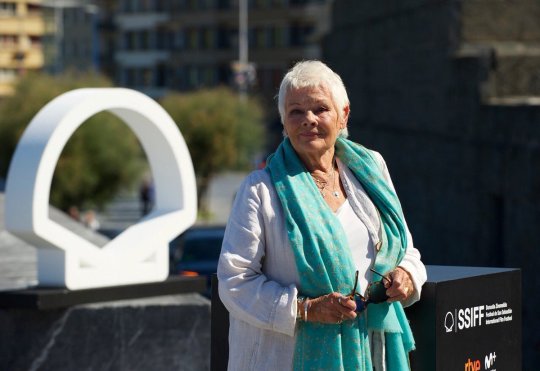
San Sebastian International Film Festival, 2018 Donostia Award Photocall Photographer: Antonio Sierra
#Judi Daily!#San Sebastian International Film Festival#Judi Dench#Dame Judi Dench#Photographer: Antonio Sierra#Donosita Award Photocall
7 notes
·
View notes
Photo

San Sebastian International Film Festival, 2018 Donostia Award Photocall Photographer: Antonio Sierra
#Judi Daily!#San Sebastian International Film Festival#Judi Dench#Dame Judi Dench#Photographer: Antonio Sierra
9 notes
·
View notes
Photo

Day 1872
San Sebastian International Film Festival, 2018
Red Joan Photocall
Photographer: Antonio Sierra
#Judi Daily!#San Sebastian International Film Festival#Judi Dench#Dame Judi Dench#Photographer: Antonio Sierra
6 notes
·
View notes